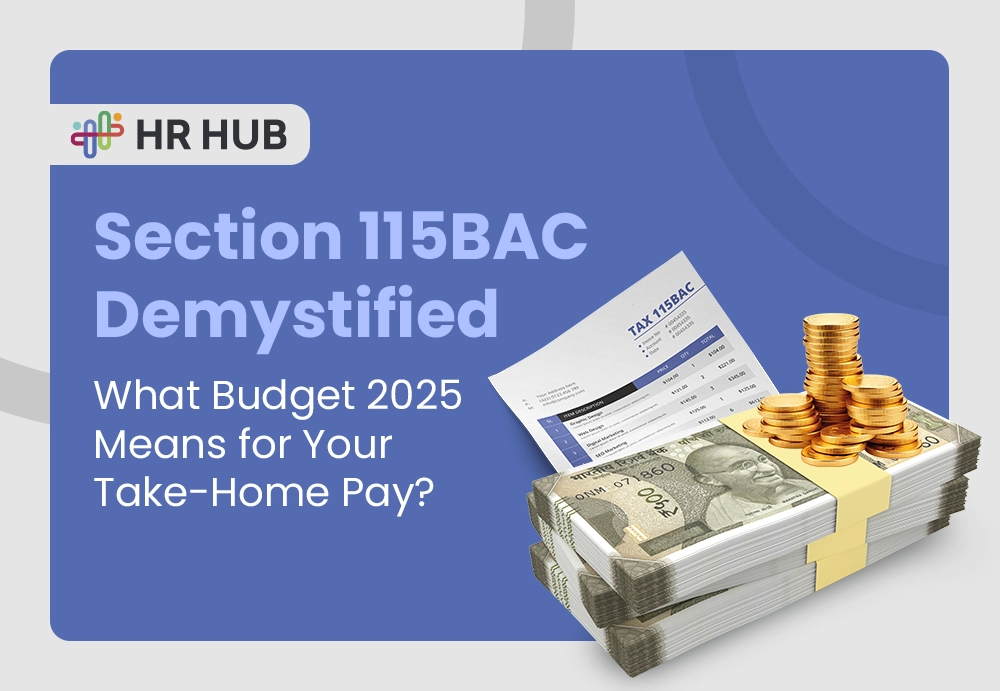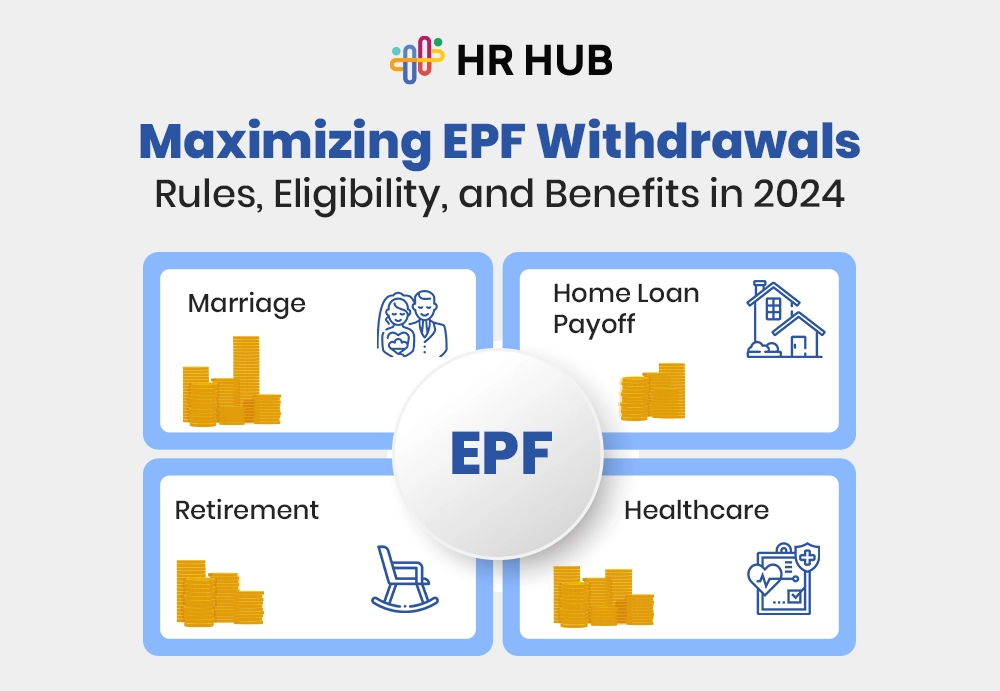Performance management has officially entered its glow-up era.
What used to be a rigid, top-down system of annual checklists and awkward conversations is now being replaced by agile, tech-empowered ecosystems built around growth, trust, and transparency. In 2025, organizations aren’t just measuring performance—they’re shaping it in real-time.
Let’s explore the biggest performance management trends redefining how we lead, evaluate, and empower today’s workforce.
Exploring Performance Management Trends and Techniques of 2025
It's time to explore the performance management trends and techniques that will play a crucial role in 2025.
From Periodic Reviews to Real-Time Performance Conversations
The annual performance review is on life support—and we’re not sending a rescue team. Instead, businesses are investing in continuous feedback loops that fuel development throughout the year.
Here’s why: feedback delayed is feedback denied. When an employee receives a review six months after missing a goal, the opportunity for learning and course correction is often long gone.

In contrast, real-time feedback enables:
- Managers need to address issues when they’re still fixable
- Employees need to reflect and adapt immediately.
- A culture of open dialogue, not delayed judgment
Example: Leading companies like Adobe and Accenture have ditched the annual review in favor of frequent check-ins. These casual, two-way conversations occur monthly or even weekly, often facilitated by platforms that enable both parties to record action points, achievements, and roadblocks.
More than just a tick-box tool, employee evaluations have evolved into growth-focused conversations—part coaching, part collaboration.

Personalization Over Standardization: One Size Doesn’t Fit All
The future of performance management trends lies in treating employees not as roles, but as individuals with unique motivations, learning styles, and career goals.

Generic goals like “Improve communication” or “Increase productivity” no longer suffice. In 2025, progressive organizations are embracing:
- Role-specific goal alignment
- Personal development plans integrated with KPIs
- Employee-driven goals alongside company objectives
Example: In a design agency, a visual designer’s performance is now tracked using creative impact and client feedback rather than just speed. For developers, code quality and team collaboration metrics might be prioritized over the number of lines of code written.
By allowing employee evaluations to be customized based on both the person and their potential, businesses are creating more relevant, motivating, and fair systems.
Pro tip: Personalized performance plans also help spot hidden talent. Employees who may not shine under conventional metrics can thrive when given autonomy and the right benchmarks.
Real KRAs in Action: Role-Based Performance Samples
In 2025, performance is personalized, and your Key Results Areas (KRAs) should be too. Below are sample Key Results Areas (KRAs) that organizations are using to create clarity, accountability, and alignment across roles.
Marketing Executive
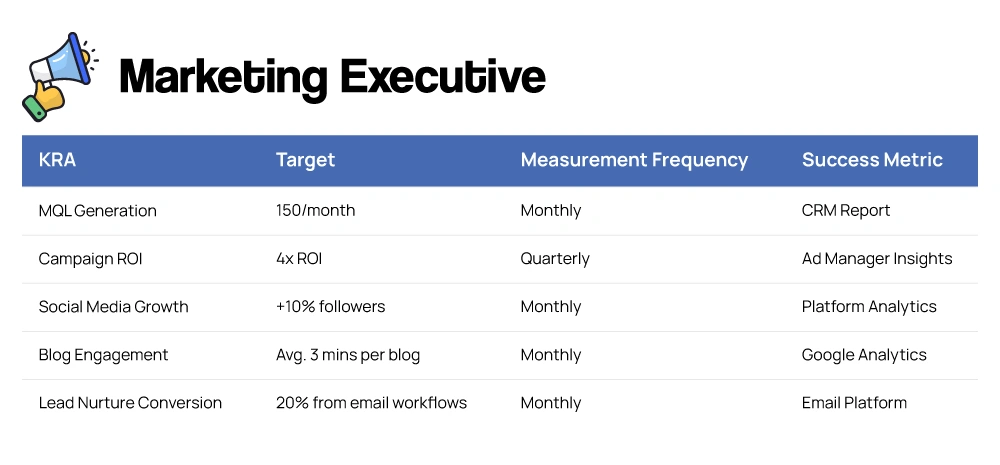
HR Manager
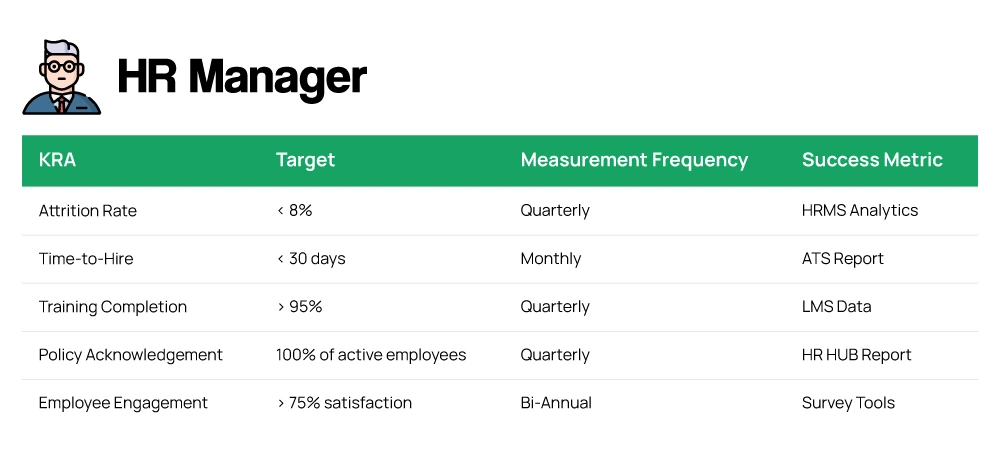
Software Developer
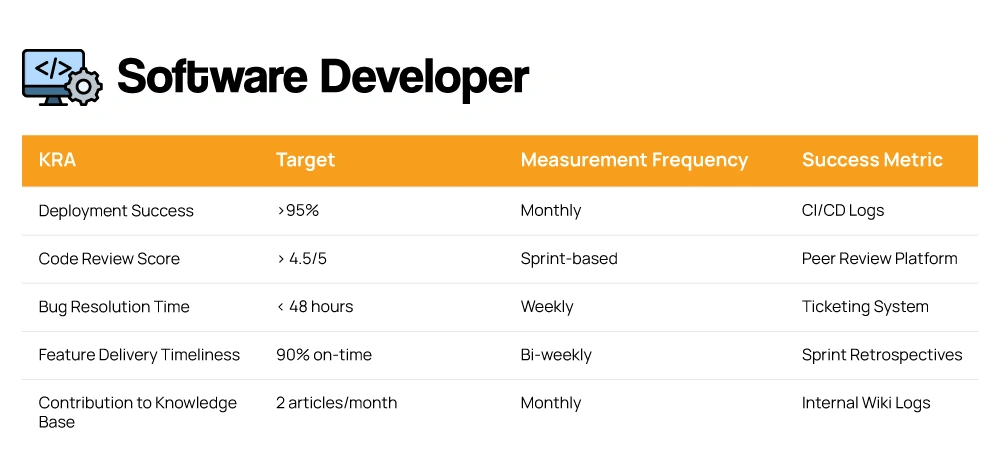
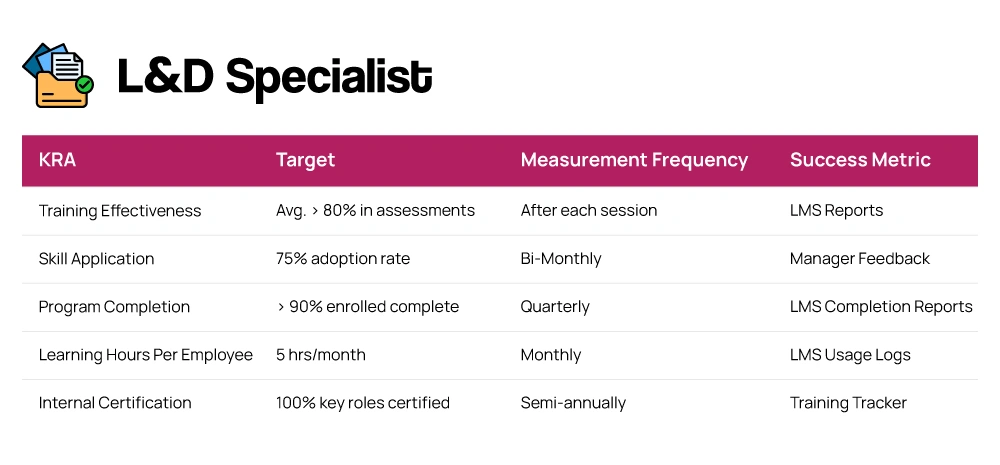
Pro Tip: Personalized performance plans also help spot hidden talent. Employees who may not shine under conventional metrics can thrive when given autonomy and the right benchmarks.
Peer-Driven, Not Just Manager-Driven: The 360° Revolution
Welcome to the era where performance appraisal systems are no longer single-lens evaluations but multi-source, peer-supported networks of feedback.
The traditional hierarchy where only your manager evaluates you is outdated. Today’s teams collaborate across departments, functions, and continents. So why limit feedback to just one viewpoint?

What 360° Feedback Looks Like in 2025:
- Structured peer reviews after project completion
- Client feedback for customer-facing employees
- Upward feedback (yes, employees evaluating managers)
- Peer kudos systems have been integrated into daily workflow tools.
Example: At a SaaS company, after each sprint, developers and QA teams provide feedback on collaboration, responsiveness, and innovation. This feedback is tagged, stored, and factored into quarterly evaluations.
This shift empowers teams to own their performance narrative and fosters a culture where recognition comes from all directions.
Caution: Peer reviews must be moderated to prevent bias and ensure a fair evaluation process. The best systems guide clear prompts, relevant context, and customizable privacy settings.
Performance Powered by Data: Insights > Intuition
Thanks to AI and analytics, performance management trends are more informed than ever. In 2025, gut-feel reviews are being replaced with data-backed, insight-rich dashboards that tell a story about growth, gaps, and goals.

Key developments include:
- Progress tracking systems that integrate with task managers
- Engagement scores synced with performance outcomes.
- Predictive analytics to flag burnout risk or disengagement
Example: A retail chain uses AI to compare sales associate performance with traffic data, peak hours, and customer satisfaction ratings. If an associate excels during high-traffic hours, the system recommends them for leadership training.
HR teams are also analyzing continuous feedback trends to identify top performers and team dynamics that require intervention.
Why it matters: Data turns evaluations into enablement. It removes bias, clarifies expectations, and ensures that recognition is based on outcomes rather than opinions.
Managers as Coaches: Leading with Empathy and Strategy
One of the most humanizing shifts in performance management trends is the redefinition of a manager’s role. Today’s best leaders aren’t just KPI guardians—they’re career coaches and culture champions.

Here’s how coaching-oriented managers are changing the game:
- They ask more than they tell, using inquiry to guide growth
- They align employee aspirations with the business's goals.
- They provide feedback as a gift, not a verdict.
Example: In a tech firm, instead of saying “Your productivity is low,” a manager might ask, “What blockers are affecting your workflow, and how can we remove them together?”
Today’s best leaders aren’t just KPI guardians—they’re career coaches and culture champions.
Here’s how coaching-oriented managers are changing the game:
- They ask more than they tell
- They align employee aspirations with business goals
- They provide feedback as a gift, not a verdict
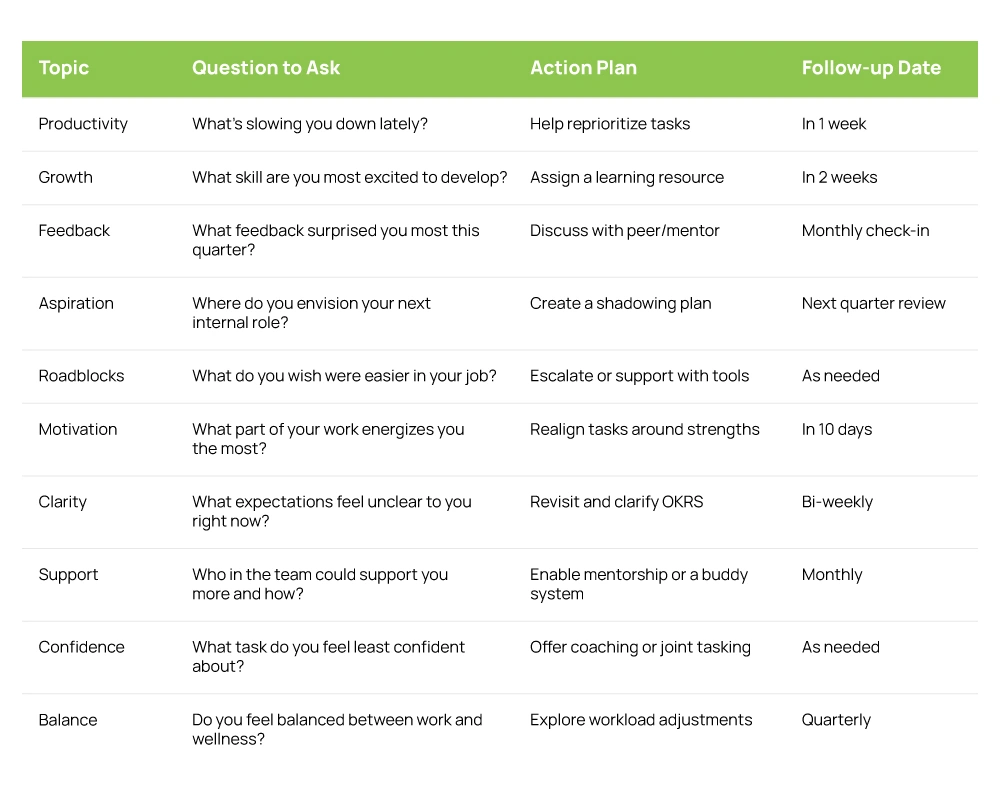
Likewise, we have created a template that makes your work easier. You can easily download the template and improve the performance of your business/organization smoothly.
 HR HUB KRA Template
HR HUB KRA Template  Professional KRA Template
Professional KRA Template
Modern performance appraisal systems now include sections for developmental goals and coaching notes, in addition to performance ratings and evaluations.

Why Psychological Safety Is the Secret Sauce
Creating a great performance culture isn't just about goals—it's about safety.
Ask yourself:
- Do employees feel safe admitting failure?
- Can they challenge their manager respectfully?
- Do they receive feedback without fear?
When teams feel safe, they perform better. In fact:
- Companies with high psychological safety see 27% better performance
- 76% more engagement
- Faster innovation cycles and better team collaboration
But psychological safety isn’t built overnight. It requires consistent practices and role modeling from leadership:
- Leaders must be vulnerable first. When managers admit their own mistakes, it sets the tone.
- Reward honesty, not just success. Recognize employees who speak up, even if what they share is uncomfortable or challenging.
- Separate feedback from punishment. Make it clear that constructive criticism leads to improvement, not repercussions.
- Normalize dissent. Teams should be encouraged to challenge ideas and offer alternatives in a respectful manner.
Tip: Introduce cultural rituals like “Reflection Fridays' or “Failure of the Month' celebrations to normalize learning from mistakes and create a space where vulnerability leads to growth.
You can also adopt techniques like:
- Blameless post-mortems after failed projects to focus on learnings, not individuals
- Anonymous Q&A sessions with leadership to surface unspoken concerns
- Psychological safety check-ins as part of monthly one-on-ones
Psychological safety isn’t soft—it’s strategic. It’s what enables radical candor, true accountability, and real innovation.
Cultivating a Culture of Growth: Performance Beyond Ratings
The most progressive companies in 2025 don’t just manage performance—they grow it. This involves connecting employee evaluations with learning and development, mentorship, wellness, and purpose.
Here’s what a growth-driven performance culture includes:
- Clear career pathways linked to performance metrics
- Upskilling opportunities surfaced from feedback.ck gaps
- Recognition programs tied to value-driven achievements
- Safe spaces for feedback, reflection, and reset
Example: A company links recurring feedback themes (e.g., “needs presentation confidence”) with micro-learning modules and matches employees with internal mentors.
Performance appraisal systems aren’t just a judgment tool—they’re the launchpad for lifelong learning.

Rethinking Performance with Purpose: HR HUB’s Approach
At HR HUB, we believe performance isn’t a number—it’s a narrative. That’s why our platform is designed to support human-centric, data-intelligent, and feedback-forward performance journeys.
Whether you’re a startup building a transparent culture or a large enterprise standardizing global reviews, HR HUB’s performance management module offers:
- Configurable performance appraisal systems with 90°, 180°, and 360° options
- Real-time goal tracking, review automation, and feedback workflows
- AI-driven insights to support decision-making and development mapping
- Integrated continuous feedback tools and peer recognition features
We’re here to help you transition from monitoring output to multiplying potential, with the technical, design, and HR expertise to back it.
Your Turn to Evolve Performance
2025 has made one thing crystal clear: performance management isn’t just a task for HR—it’s a strategic advantage for every business ready to evolve.
So, are you measuring what matters—or what’s easy?
It’s time to turn reviews into relationships, ratings into results, and feedback into fuel. And with platforms like HR HUB by your side, you're already halfway there.




